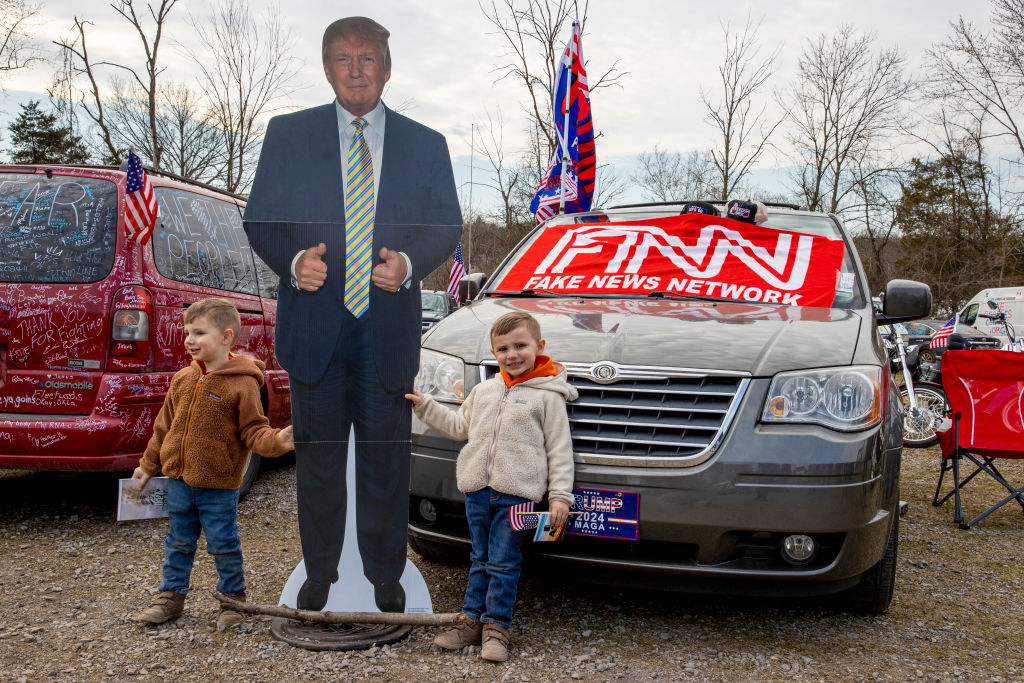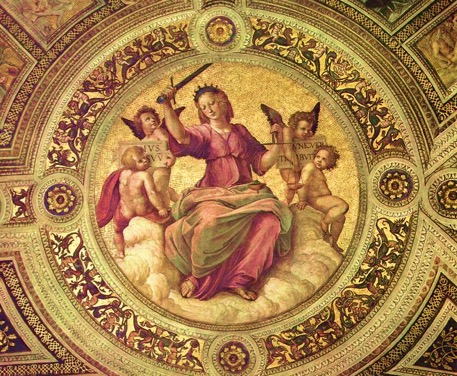An analysis of the current American political crisis.
Liberalism Driving the Speed Limit

How neocons locked the Right into a leftward drift.
Glenn Ellmers, the diligent biographer of Harry Jaffa, has called attention to the insufficiently understood friendship between Lincoln scholar and Lincoln admirer Harry Jaffa and the Southern conservative M.E. Bradford. Most historians of the conservative movement know that these two titans of post-World War II conservatism battled furiously in the pages of Modern Age starting in 1975. Given the ferocity of their polemics, it is generally assumed the two debaters must have disliked each other personally. As Ellmers demonstrates in statements taken from his deceased teacher, however, Jaffa and Bradford were close personal friends and even encouraged each other’s work. When Bradford died in April 1993, Jaffa wrote a long, moving eulogy in National Review, which Ellmers provides in full in American Greatness.
In 1959 when Harry Jaffa brought out his magnum opus Crisis of a House Divided, the populist conservative Willmoore Kendall published a memorable critical review. Although we paleos are inclined to quote Kendall’s animadversions about fighting endless wars in the name of natural rights and the dangers of a succession of American Caesars in the image of Jaffa’s Lincoln, Kendall also praises Jaffa’s exalted prose and moral tone. What may have contributed to the Bradford-Jaffa debates was Jaffa’s broadside against a book Kendall prepared with George Carey, Basic Symbols of the American Tradition, which was published in 1970, three years after Kendall’s death. Jaffa tore into that book with obvious passion for ignoring the natural rights tradition that from his perspective lay at the heart of the American Founding.
Jaffa’s critics complain about how savagely he attacked the deceased Kendall and explain that it was Bradford who came to the aid of a fallen comrade and his followers. As someone who stands much closer to Burkean conservatism than the natural rights camp, let me point out the obvious here: vigorous debate about historical subjects is the lifeblood of my discipline. I enjoyed reading the polemics produced on both sides of the questions raised about the American Founding in Modern Age.
Most importantly, however, we should recall the framework in which these debates occurred. The participants respected their opponents and were personal friends. Well into the 1980s, the conservative movement included both West-Coast Straussians and the historically based, traditionalist Right, just as it had room for both traditionalists and libertarians. Indeed, the Right of yesteryear often looked and sounded like a debating society, which was certainly true of National Review in the 1960s, when Frank Meyer, Russell Kirk, James Burnham, and other editors went at each other hammer and tongs. It is necessary to see these battles in perspective. Although the conservative movement was then well to the right of where it is now, especially on social issues, and was united by opposition to a dangerous Communist challenge, it was open to philosophical differences and far-ranging dissent on political questions. This did not stop debating opponents from socializing or keep Kendall from extolling Jaffa’s elevated tone in a book that in other respects he disagreed with.
David Frisk, a Kendall biographer, has made available to me a statement that his subject made in an article published in Intercollegiate Review in 1965:
yet the Strausses and Voegelins and Jaffas and Weavers continue to ply their trade, and produce books that breathe confidence, a confidence that the apt pupil will quickly learn to recognize and value: that the ultimate effect of their books will be to purge the intellectual climate of ideology, and to restore true philosophy to its rightful place of honor and influence.
Note how Kendall places Jaffa, his supposed adversary, among thinkers he obviously admired. He also mentions Crisis as a work of great scholarly value.
The Undesirables
Debates of this kind allowed philosophical divisions to be aired in what was generally a culture of mutual respect. Into the 1980s the older conservative movement held together while tolerating no-holds-barred debate; and as we know from the Jaffa-Bradford friendship, conservative leaders differed sharply on certain questions without fear of being canceled or ousted from their movement. Buckley established one exception in the 1950s, when he exiled those on the libertarian side who failed to oppose the Communist threat forcefully enough. Although that excommunication set a perilous precedent in my view, it was an isolated occurrence. It did not have the catastrophic consequences of later conservative gatekeeping, particularly since the 1980s.
It was the neoconservative ascendancy, which began during the Reagan presidency, that produced a far less contentious and less open Right. The neoconservative accession to power over conservative magazines and foundations had a stifling effect on intramural conservative debate and severely restricted the relatively open discussion that had once prevailed on the Right. If differences of opinion were thereafter tolerated, these differences were mostly about how far conservatives should go in accommodating the Left. While certainly not all conservative celebrities would now welcome the neocon label, we should not understate the neoconservative influence in changing the establishment Right. It moved American conservatism generally toward the left while normalizing the isolation of dissenters.
The subsequent influence of the conservative-Republican media had an even more limiting effect on conservative discussions. The fierce debates pursued by Jaffa and Bradford would not even be possible under the new dispensation. If a debate like that were allowed to take place, the more politically incorrect participant, Bradford, would likely be barred from further appearances as a “conservative guest.” Moreover, public discussions among self-described conservatives have become more and more focused on current events, and the desire to make “conservatism” accessible to the broad public has meant bringing it into line with a Left that continues to march leftward.
I doubt a Fox News celebrity would even dare call for the rescinding of gay marriage, lest the media Left attack him or her as a bigot, with ruinous professional consequences. (Of course, it is the conservative media that encourages such consequences by rarely standing firm on such matters.) For the moment it may be possible for self-identified conservatives to protest having biological males compete in women’s sports events, but even that debating issue may eventually be lost, as conservatives reposition themselves in accordance with the Left’s new battle lines. The reason that Glenn Ellmers and I agree on almost all relevant issues is that our thinking remains within the parameters of an older conservatism, a persuasion that first the neocons and then later the media carnival managed to replace.
A final observation may be warranted here. West-Coast Straussians seem more conservative than others belonging to the present conservative spectrum because they are what they seem. Although Jaffa and his disciples were once the main debating partners of the paleos, they were recognizable as members of an older conservatism. Although the focus among West-Coast Straussians on natural right and democratic equality has resonated among establishment conservatives, the latter and West-Coast Straussians have not always been on the same page politically. It cannot be pure coincidence that Harry Jaffa’s followers have often seemed like right-wing extremists to their East-Coast Never-Trump counterpart, a development that goes back to Jaffa’s support for Barry Goldwater in 1964. There is to my knowledge no East-Coast Straussian equivalent to the late Angelo Codevilla and to William Voegeli, both of whom critically examined the modern administrative state as a departure from America’s constitutional republican traditions. Such are not the typical views of get-along establishment conservatives. These observations may help explain why Glenn Ellmers may feel closer to a battle-worn paleo like me than to Bill Kristol and others with ties to the East Coast Straussians.
The American Mind presents a range of perspectives. Views are writers’ own and do not necessarily represent those of The Claremont Institute.
The American Mind is a publication of the Claremont Institute, a non-profit 501(c)(3) organization, dedicated to restoring the principles of the American Founding to their rightful, preeminent authority in our national life. Interested in supporting our work? Gifts to the Claremont Institute are tax-deductible.
A conservative revolution is in order.
Putting the question to David French about moral reasoning in action.
Is the leftist dream now within reach? If President Trump loses, we will find out.




